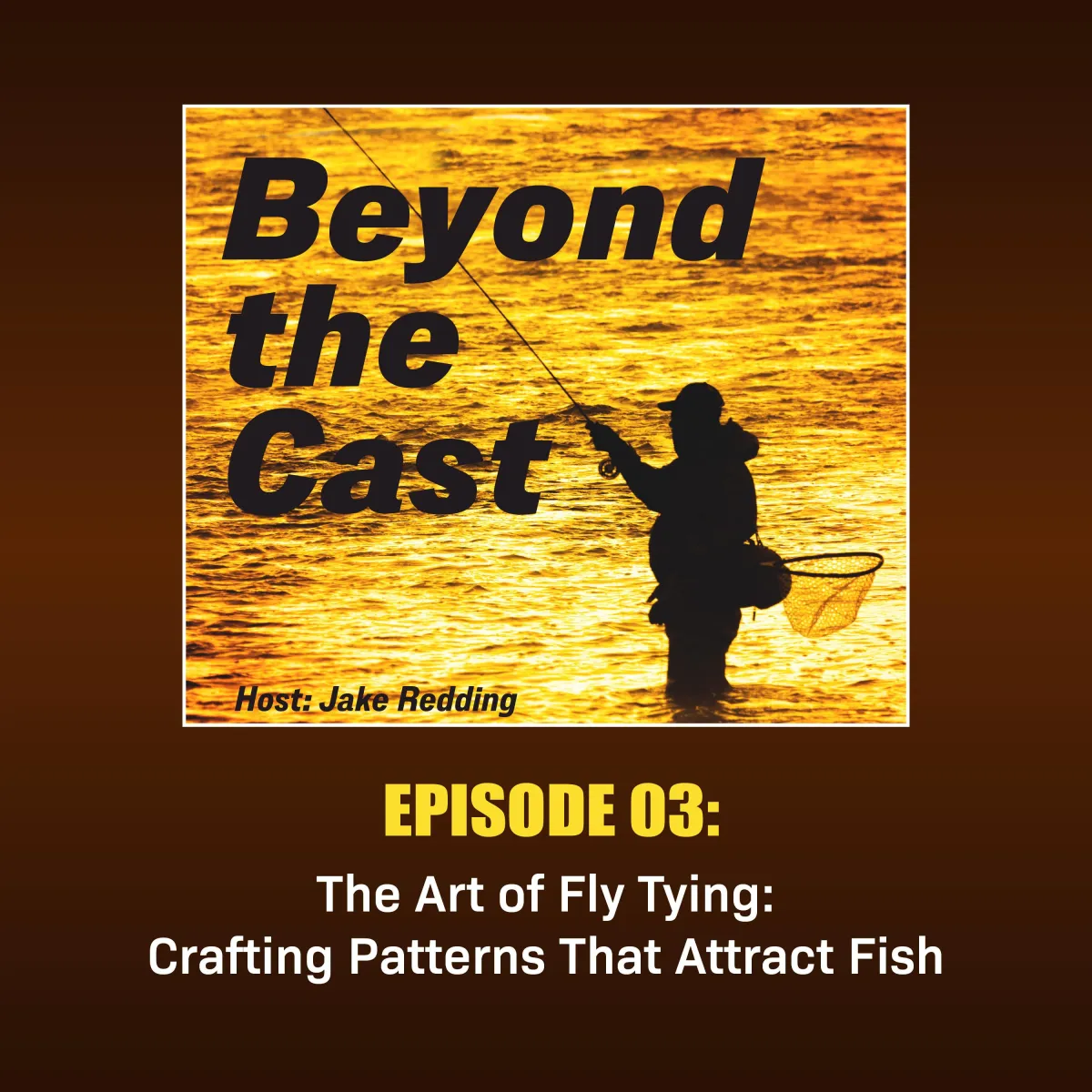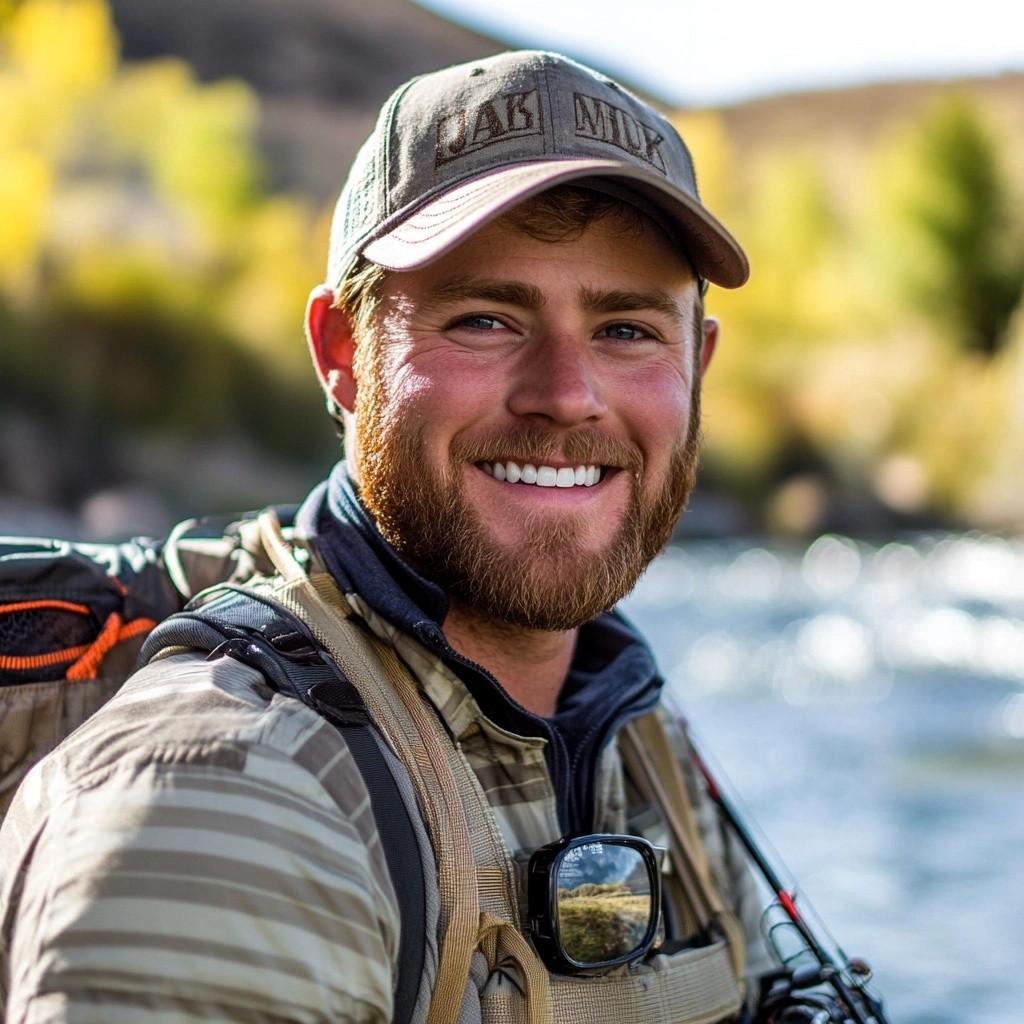
The Art of Fly Tying: Crafting Patterns That Attract Fish
Welcome to Beyond the Cast, the podcast where fly fishing meets adventure, connection, and growth.
I'm your host, Jake Redding, a fly angler who's passionate about sharing tips, stories, and a love for the water.
Whether you're here to master your casting technique, explore stunning fishing destinations, or learn how to fish sustainably, you're in the right place.
So grab your rod, reel, and a sense of curiosity.
It's time to dive into the world of fly fishing, like never before.
Welcome to another episode of Beyond the Cast.
I'm your host, Jake Redding, and today we're diving into one of the most fascinating aspects of fly fishing, the art and craft of fly tying.
Whether you're just starting out or have been tying flies for years, there's always something new to learn and explore.
So grab your bobbin holder and let's unravel the threads of fly tying together.
To start with, let's talk about why fly tying is such a significant part of fly fishing.
At first glance, it might seem like a functional activity, merely creating an imitation to lure fish.
But dig a little deeper and you'll find that it's not just about functionality, it's about tradition, creativity, and connection to the sport.
Fly tying lets you deeply understand the life forms you're imitating and gives you the freedom to innovate.
It's an art form that's tied closely to our personal fishing stories and successes.
Now, when we talk about materials, it's important to have a decent setup.
The basic materials you'll need to get started are hooks, threads, feathers, furs, and synthetics.
Hooks form the core structure, threads tie everything together, and the rest mimic the body of insects or bait fish.
But here's where things get intricate.
Each material you choose affects how your fly will perform in the water.
The weight, movement, and even the color of the materials can mean the difference between an empty net and a day's worth of catches.
Let's move on to some of the basic techniques for tying flies.
For beginners, mastering the fundamental techniques like the whip finish, half hitch, and various wrapping techniques are key.
Take for example a simple woolly bugger.
This pattern is not only versatile, but also great for those new to tying.
Start with wrapping the thread around the hook shank, attaching the tail, then the body, and finally, securing everything for durability.
As you gain confidence, you can begin to experiment with more complex patterns.
Pattern selection plays a significant role based on the fish species and water you're fishing in.
Look at your environment, think about the prey that fish are actively feeding on, and tailor your pattern accordingly.
For instance, trout enthusiasts might favor dry flies or nymphs that imitate the insects prevalent in their waters.
Meanwhile, those targeting saltwater species will need different materials to withstand harsh conditions and swap the delicacy for something bolder.
Creativity and experimentation in fly tying are paramount.
Once you master the basics, don't be afraid to innovate.
Some of the most legendary flies were born from unexpected tweaks and twists to classic patterns.
I've spoken with countless anglers who stumbled upon a winning pattern purely by trying something new.
And when you catch a fish on a fly you created, the sense of fulfillment is unmatched.
Your flies become a personal signature, a way of leaving your mark in the waters.
Throughout my years of fly fishing, I've collected numerous stories from fellow anglers who've experienced the transformative effect of fly tying.
There's a strong sense of pride and joy in catching fish with a fly that you personally designed and tied.
One angler shared a story about a day on the river where nothing seemed to work until he tried a quirky pattern he had tied the night before, turning a frustrating day into one for the books.
These personal stories reflect the depth of connection between fly tying and our success and enjoyment in fishing.
Fly tying is steeped in tradition, connecting us to generations of anglers who have passed down their skills.
It's a practice that combines historical techniques with modern innovations.
By learning how to tie flies, you're participating in a craft that millions enjoy worldwide, and you're contributing to its growth and evolution.
If you're just getting started and wondering what resources and tools you need, I recommend beginning with a good fly tying kit.
These kits provide the basics and are perfect for novices.
Online tutorials, local fly shops, and community forums are invaluable resources.
Don't hesitate to join fly tying workshops, attend local events, or even find a mentor.
The fly fishing community is incredibly supportive and eager to help newcomers thrive.
In any creative pursuit, sharing is vital.
I'd love for listeners to engage and share their fly tying creations and experiences.
We all have unique stories and insights that can inspire and educate others, whether it's the story of your first tie, or a particular pattern that changed the way you fish.
Sharing keeps our community vibrant and connected.
As we wrap up this episode, let's reflect on the rich canvas that fly tying provides, both as an art and a science.
We've explored its intricacies, from basic tie techniques to innovation and creative expression.
This craft not only enhances our fishing experience, but also fosters a deeper appreciation for the allure of the sport.
So, as you sit down at your vice, remember you're not just tying a fly, you're weaving a part of your fishing narrative.
Thanks for tuning in to Beyond the Cast.
We've delved into the art of fly tying together, exploring the various aspects that make it an essential part of fly fishing.
From practical tips to inspiring personal stories, I hope you found inspiration and knowledge to take back with you onto the water.
Until next time, keep tying and tight lines.
Thanks for joining me on Beyond the Cast.
I hope today's episode inspired you to explore, learn, and connect more deeply with the incredible world of fly fishing.
Don't forget to subscribe, leave a review, and share your favorite moments with the community.
Let's keep the conversation going.
Follow us on social media and share your fishing stories.
Until next time, keep your lines tight, your casts smooth, and your adventures unforgettable.
